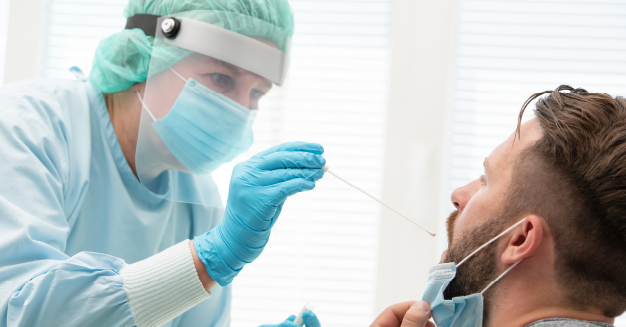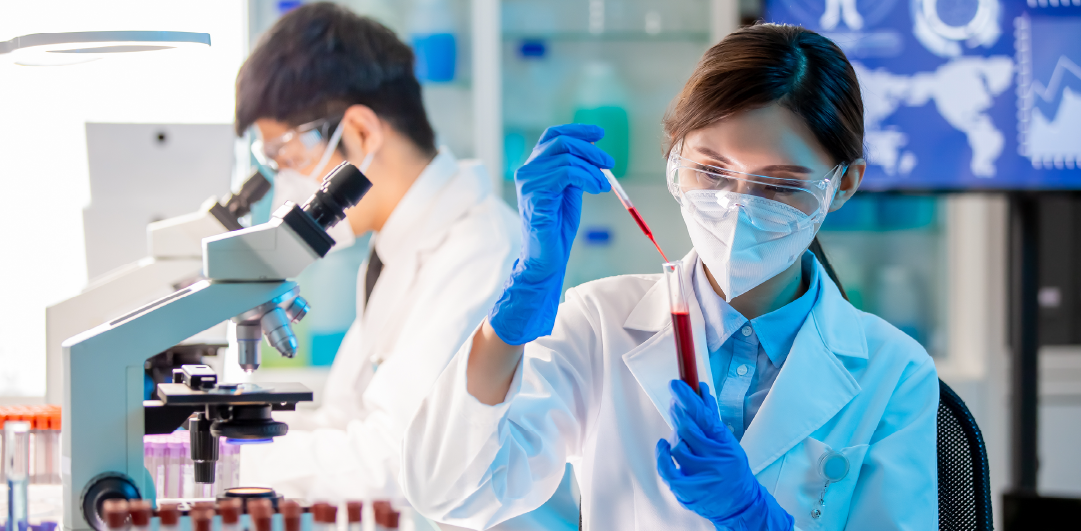Before COVID-19 was discovered, these lab panels couldn’t identify the SARS-COV-2 virus, so these procedures have been updated since the discovery of the virus to have is included in the panel. Until 2020, respiratory panels could only identify common respiratory illnesses, including the flu, respiratory syncytial virus (RSV), human metapneumovirus, and the common cold. They could also test for some bacterial infections, such as bacterial pneumonia and whooping cough.
What Happens During a Respiratory Pathogen Panel?
There are a couple of ways your healthcare provider can take a sample of your DNA for laboratory testing. The most common way is with a nasopharyngeal swab, where you tilt your head back and a swab will be inserted and rotated inside your nostril. Another way to fulfill the specimen requirements is by having a saline solution injected into your nostril and removing a sample. You don’t need to do anything in preparation for the test, but you can expect to feel some discomfort when the sample is taken.
The panel tests for both viral and bacterial pathogens, and you can expect to get your test results within a few days following your appointment. Since the beginning of the COVID-19 pandemic and the uptick of testing for the SARS-COV-2 pathogen, there has been some backup in laboratory testing and, in response to this, testing for respiratory pathogens has gotten faster and more accurate over time. Depending on how busy your local clinic laboratories are, it’s possible to get results within a few hours.

What Your Results Mean
If your physician has recommended that you have a respiratory pathogen panel completed, it is because you have shown symptoms of a respiratory illness or a respiratory tract infection. These symptoms can include a sore throat, sneezing, muscle aches, coughing, fever, and wheezing. Having a respiratory pathogen panel performed can help quickly determine what treatment is needed for your symptoms, as it can pinpoint the exact pathogens that come from a specific illness or infection.
If you get a positive result on your panel, then you have a respiratory illness that needs to be treated. If you receive negative results, then this means that the cause of your symptoms isn’t related to your respiratory system and you may need to undergo further testing to see what exactly is attacking your immune system and causing symptoms.
It is rare but is possible to get a false positive result when testing for COVID-19. This happens on occasion with at-home antigen testing. They’re often the result of user error and have less sensitivity than a laboratory test. When you have a respiratory pathogen panel with COVID-19 testing, the genetic material found in SARS-COV-2 cannot be confused with the material from other viruses and bacteria.

Respiratory Pathogen Panels at OnPoint Labs
The medical field is always evolving and has changed drastically in the last few years since the discovery of COVID-19. As a result, syndromic panel testing has expanded to include testing for the SARS-COV-2 virus, along with over a dozen other respiratory viruses and bacteria. It wasn’t too long ago that we had to order multiple tests to get the same comprehensive results that we get from just one panel today. These panels allow for quicker and more accurate testing when diagnosing respiratory illnesses and infections so that we can minimize the damage done to your lungs and get you back to good health.
If your healthcare provider has recommended that you or a loved one get a respiratory pathogen panel done, OnPoint Lab’s team of experts can deliver quick results and provide other great resources in the Greater Houston area. Our respiratory pathogen panels test for over 16 different viruses and bacteria, including four different coronavirus pathogens. Visit our website to learn more information about how to schedule your appointment.


